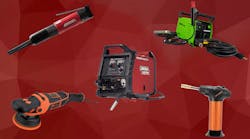Jason Balzer, Body Structures Supervisor, Technical Specialist with Ford Motor Company discusses automotive lightweighting materials leading up to the Global Automotive Lightweighting Materials Detroit Summit 2018, coming Aug. 21-23.
Jason, can you let us know a bit more about your background and current activities at Ford?
I have a BS in Mechanical Engineering from Kansas State Univ., and MS in Engineering Management from Univ. of Mi. I’ve been at Ford almost 20 yrs. Most of my career has been spent in Body Structures with half of it in our Advanced Engineering organization and the other half on the Applications side designing & releasing parts for production. My career started as a Weight Engineer developing new lightweight designs, predominately in magnesium. I’ve held D&R positions on the 2004 F150 & 2013 Fusion body structure teams, and in between in our advance areas. I’m currently a Body Structures Technical Leader within Production Development. My team is focused on development and implementation of new body structure technologies to reduce the weight of our vehicles.
What role do you see high strength steels playing in future mobility with the transition to electric and autonomous vehicles over the next 5 to 10 years?
High strength steels will continue to play an important role in our vehicles. It provides a good balance between performance (stiffness & strength), manufacturability, and cost. Some of the new grades show promise to aide with vehicle weight reduction as well.
What are the main technical challenges to increased use of Gen 3 steels and how are these being overcome?
Joining, specifically LME (liquid metal embrittlement), is one of the main challenges the industry is working to overcome.
What developments can we look forward to in terms of new steel alloys for lightweighting of vehicle components and assemblies?
I think more formable high strength steels. Gen3 steels are a great start with good formability at the 1000 & 1200 Mpa levels, but I think looking forward, we’re going see more formable material.
What materials and technologies do you see having the most potential in delivering cost efficient automotive lightweighting?
All materials have their place. We’re really focused on using the right material in the right application.
What car/motor vehicle do you drive?
2016 Mustang GT350
What are you looking forward to at this year’s GALM Detroit Conference?
I’m most interested in the manufacturing and joining discussions pertaining to the new high strength steel and Al alloys.

